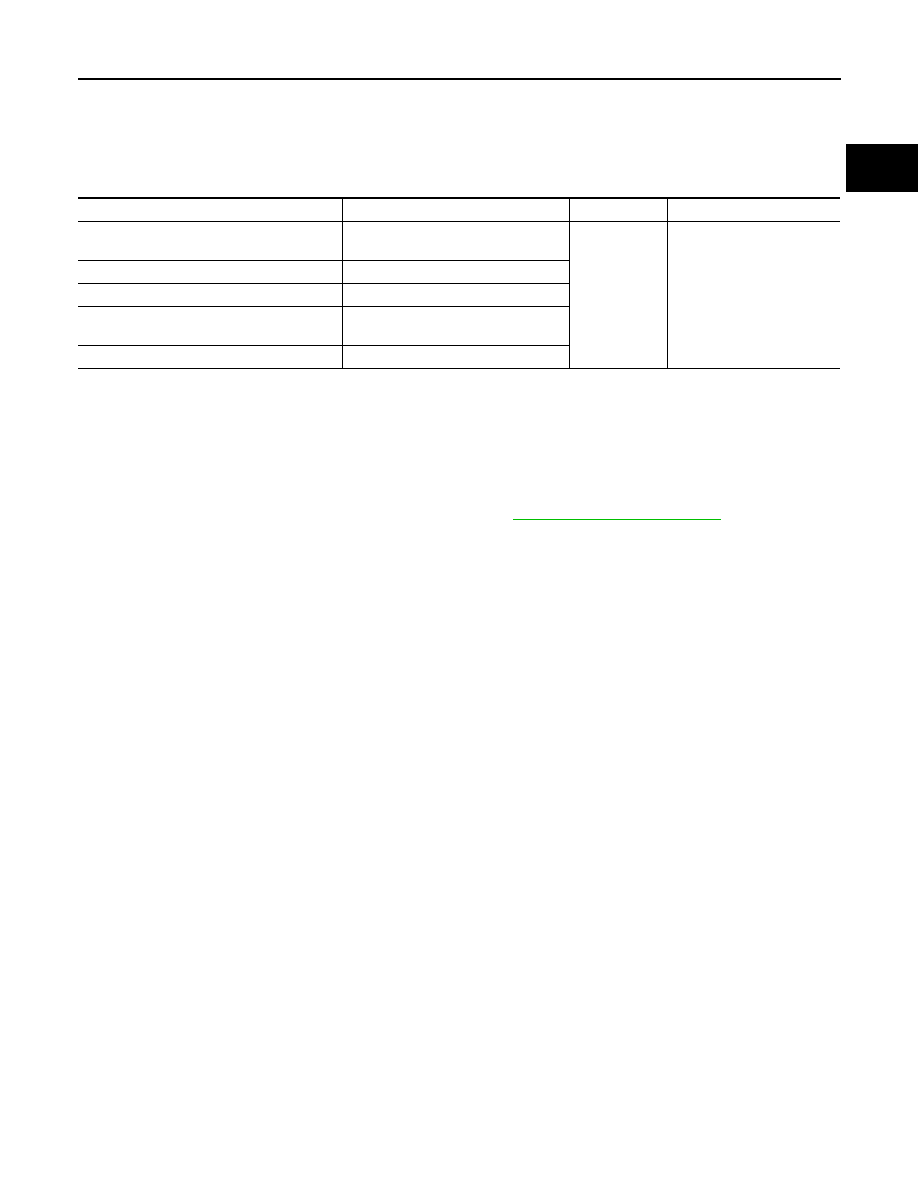Nissan Frontier D40. Manual - part 564

NORMAL OPERATING CONDITION
EC-947
< SYMPTOM DIAGNOSIS >
[VQ40DE]
C
D
E
F
G
H
I
J
K
L
M
A
EC
N
P
O
NORMAL OPERATING CONDITION
Fuel Cut Control (at No Load and High Engine Speed)
INFOID:0000000005273903
INPUT/OUTPUT SIGNAL CHART
*: This signal is sent to the ECM through CAN communication line.
SYSTEM DESCRIPTION
If the engine speed is above 1,800 rpm under no load (for example, the shift position is neutral and engine
speed is over 1,800 rpm) fuel will be cut off after some time. The exact time when the fuel is cut off varies
based on engine speed.
Fuel cut will be operated until the engine speed reaches 1,500 rpm, then fuel cut will be cancelled.
NOTE:
This function is different from deceleration control listed under
.
Sensor
Input Signal to ECM
ECM function
Actuator
Park/neutral position (PNP) switch (M/T)
TCM (A/T)
Neutral position
Fuel cut control
Fuel injector
Accelerator pedal position sensor
Accelerator pedal position
Engine coolant temperature sensor
Engine coolant temperature
Crankshaft position sensor (POS)
Camshaft position sensor (PHASE)
Engine speed
Wheel sensor
Vehicle speed*